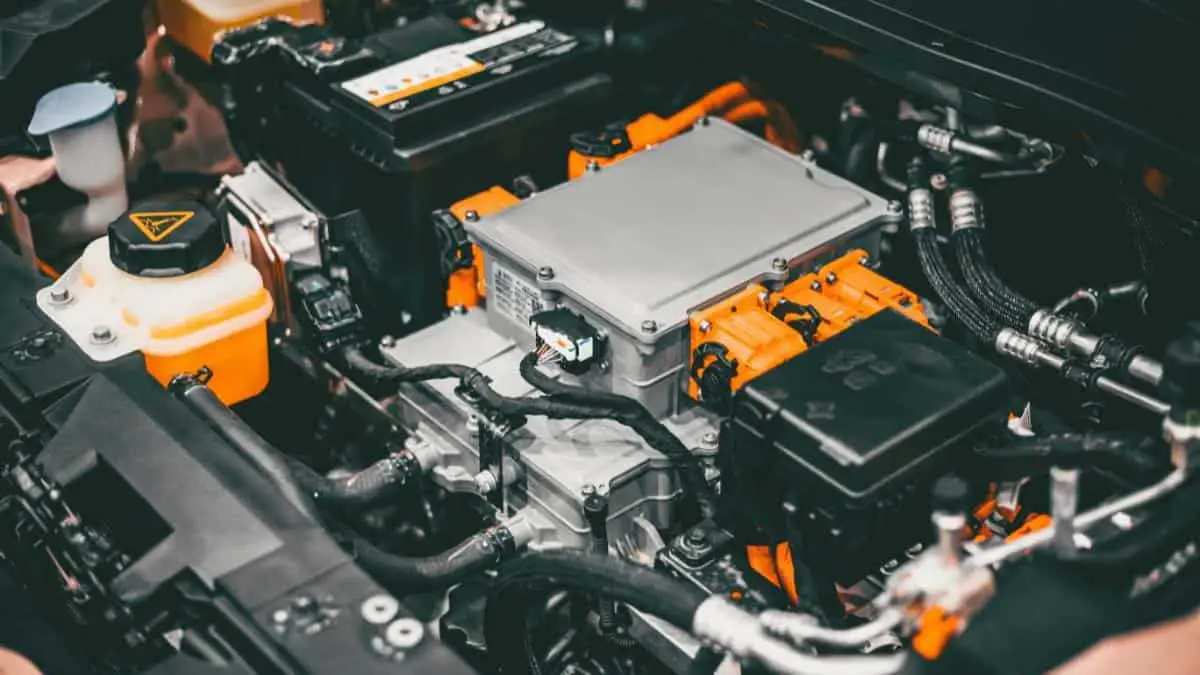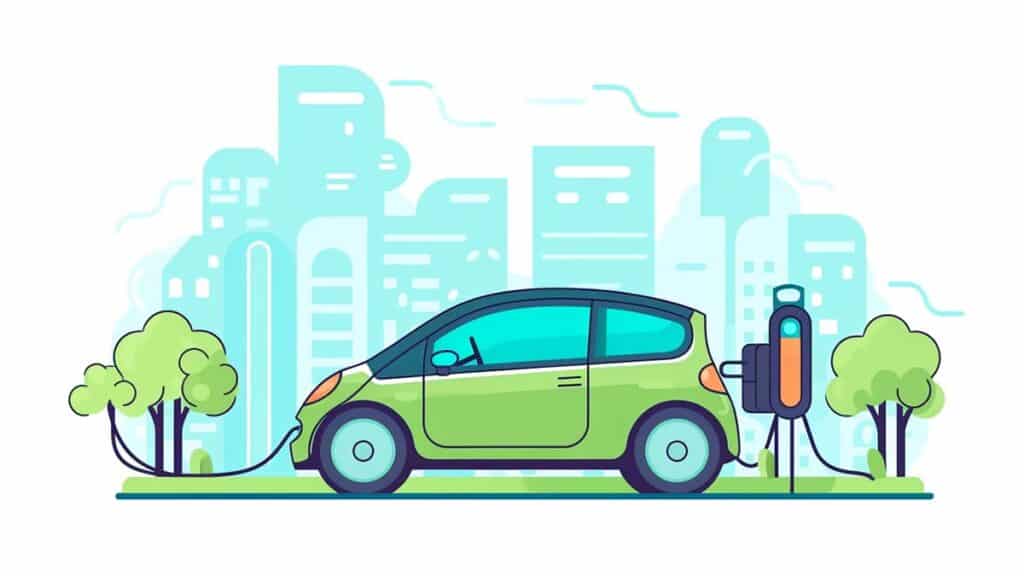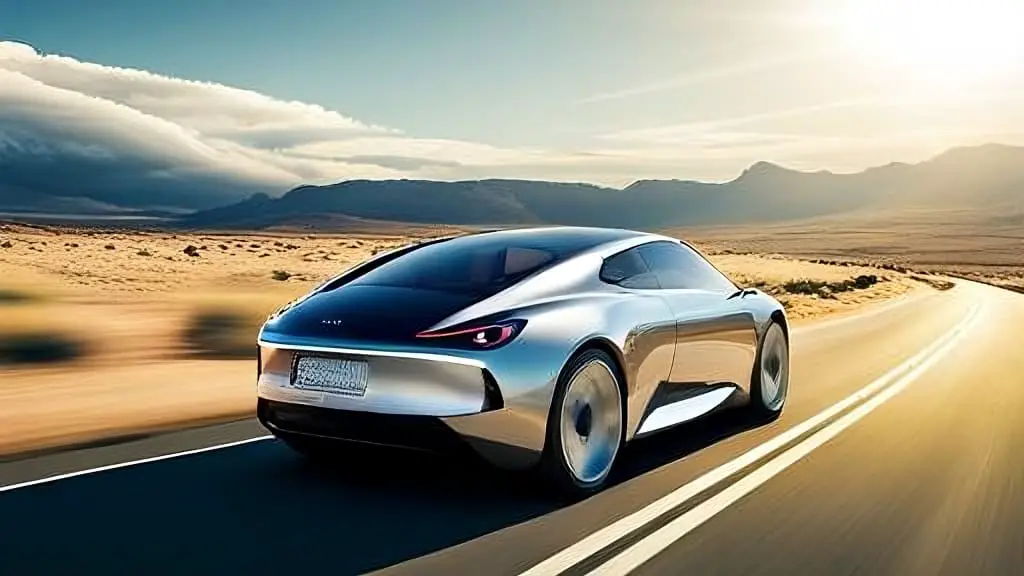Sorting through all the chatter about zero-emission vehicles can feel as complex as a high school chemistry equation. Did you know not all zero-emission vehicles are powered by batteries? This blog post will demystify common misconceptions, delivering clear, understandable information on different types of zero-emission vehicles – from battery-powered to hydrogen fuel cells.
Let’s transform confusion into clarity!
Key Takeaways
- Zero emission vehicles include not only battery electric vehicles (BEVs) but also hydrogen fuel cell electric vehicles (FCEVs), both of which use an electric motor for propulsion.
- BEVs rely on rechargeable batteries, while FCEVs generate electricity through a chemical reaction between hydrogen and oxygen in a fuel cell.
- Both BEVs and FCEVs produce zero tailpipe emissions, contributing to cleaner air and reduced greenhouse gas emissions.
- Emerging technologies such as solar – powered vehicles are being developed to further expand the options for zero emission transportation.

Understanding Zero Emission Vehicles
Zero emission vehicles are defined as vehicles that produce no tailpipe emissions, meaning they do not release harmful pollutants into the air during operation.
Definition of zero emission vehicles
Zero emission vehicles, often referred to as ZEVs, are automobiles that do not emit exhaust gases or other pollutants from their power sources. These cars contribute significantly to environmental conservation since they produce no greenhouse gas emissions while in operation.
This is quite different from traditional cars with internal combustion engines which release harmful gases such as carbon dioxide and nitrogen oxide. The various types of zero-emission vehicles include electric cars, hydrogen fuel cell vehicles, and even certain human-powered transport like bicycles.
However, the term typically refers more specifically to vehicles powered by electricity or hydrogen fuel cells – both commercially available options in states dedicated to clean energy initiatives like California.
Types of zero emission vehicles (battery electric vehicles and hydrogen fuel cell electric vehicles)
Zero emission vehicles (ZEVs) broadly fall into two main categories – Battery Electric Vehicles (BEVs) and Hydrogen Fuel Cell Electric Vehicles (FCEVs). BEVs are powered solely by a battery which provides energy to the car’s electric motor.
Taking advantage of high-efficiency electric engines, these prime examples of zero-emission vehicles transform electricity – stored in batteries – into motion. This results in their capability to run without producing any tailpipe emissions, thus significantly reducing smog.
On the other hand, Hydrogen Fuel Cell Electric Vehicles use hydrogen gas as their primary fuel source. The fuel cell within these vehicles functions by converting hydrogen into electricity which consequently powers an electric motor.
FCEVs too are classified under the zero-emission vehicle category since they only emit water vapor and warm air during operation, thereby eliminating harmful greenhouse gas emission typically associated with internal combustion engine cars.
Therefore, not all zero-emission vehicles are purely electric; some utilize different methods such as hydrogen fuel cells to achieve a similar environmentally-friendly impact on transportation.

Zero Emission vs Electric Vehicles
Zero emission vehicles are often mistakenly believed to only refer to electric vehicles, but in reality, all zero emission vehicles use an electric motor.
Exploring the misconception that all zero emission vehicles are battery powered
Many people mistakenly believe that all zero emission vehicles solely rely on battery power and require plugging in, and this misconception needs clarification. Zero emission vehicles are a broader category, including any vehicle that emits no exhaust gas from the onboard source of power.
This category covers more than just battery-operated electric vehicles; it encompasses other types as well such as hydrogen fuel cell electric vehicles (FCEVs). These FCEVs use a hydrogen fuel cell instead of a battery to create electricity within the vehicle itself, producing only water vapor as an output.
So while both BEVs and FCEVs leverage an electric motor for propulsion and can produce zero tailpipe emissions, their methods of generating that electricity inherently differ. Therefore, not all zero-emission vehicles are purely driven by batteries indicating the presence of diversity in green vehicular technology beyond what is commonly assumed.
All Zero Emission Vehicles Use An Electric Motor
It’s important to note that all zero emission vehicles actually use an electric motor. This includes not only battery electric vehicles (BEVs) but also hydrogen fuel cell electric vehicles (FCEVs).
While BEVs rely on a rechargeable battery pack to store and deliver electricity to the motor, FCEVs generate their own electricity through a chemical reaction between hydrogen and oxygen in the fuel cell.
Both types of vehicles produce zero tailpipe emissions, meaning they don’t release harmful pollutants or greenhouse gases into the atmosphere while driving.

The Emergence of Hydrogen Powered Vehicles in The Market
Hydrogen fuel cell electric vehicles (FCEVs) have been making strides in the market as an alternative to the more established battery electric vehicles. FCEVs use hydrogen gas stored in a tank, which is then combined with oxygen from the air in a fuel cell stack to produce electricity.
This electricity is used to power an electric motor, giving FCEVs the same zero-emission benefits as battery electric vehicles.
One of the main advantages of hydrogen-powered vehicles is their quick refueling time compared to charging an electric car’s battery. With FCEVs, you can refill the hydrogen tanks in a similar way to how you would fill up a gasoline vehicle, meaning you don’t need to wait for hours while your vehicle charges.
Additionally, FCEVs offer longer driving ranges than some battery-powered cars. Hydrogen has a high energy density and can be compressed and stored at higher pressures, allowing for more miles per tank compared to current lithium-ion batteries.
The emergence of hydrogen-powered vehicles presents another option for consumers looking for zero-emission transportation solutions.
While challenges still remain with regards to infrastructure availability and cost-effective production of hydrogen fuel cells, increased investment and technological advancements are paving the way for wider adoption in the future.
One automaker that believes in the potential of hydrogen vehicles and is not convinced battery-electric is the only way to go is Toyota. Toyota is putting all its efforts into leading the hydrogen fuel cell car market and has begun to sell its FCEV Mirai model in 2023 in the US car market.
Emerging Technologies In Development
Emerging technologies in development include solar-powered vehicles, which harness the energy of the sun to generate electricity for propulsion.

Solar Powered Vehicles
Solar powered vehicles, known as SEVs, are an emerging technology that holds great promise for the future of zero emission transportation. These vehicles utilize solar panels to convert sunlight into electricity, which is then used to power the vehicle’s electric motor.
By harnessing the abundant energy from the sun, solar powered vehicles have the potential to not only reduce greenhouse gas emissions and dependence on fossil fuels, but also to dramatically decrease dependency on the electricity grid.
While they are not yet widely available in commercial markets, ongoing research and development efforts seek to improve their efficiency and affordability.
As advancements continue, solar powered vehicles could potentially have one of the most significant roles in achieving a more sustainable transportation system.
One company dedicated to developing grid-independent SEVs is Lightyear, who currently have a waitlist for their first planned model – the Lightyear 2
Conclusion
In conclusion, while all zero emission vehicles utilize electric motors, not all of them are solely powered by batteries. Hydrogen fuel cell electric vehicles (FCEVs) also fall under the category of zero emission vehicles.
It is important to understand the different technologies behind these vehicles in order to accurately assess their impact on reducing greenhouse gas emissions.
As emerging technologies continue to develop, we may see even more options for zero emission vehicles in the future.
FAQs
Are all zero emission vehicles electric?
No, not all zero emission vehicles are electric. While electric vehicles (EVs) are a popular type of zero-emission vehicle, there are also other types such as hydrogen fuel cell vehicles and solar-powered vehicles that produce zero tailpipe emissions.
What is a hydrogen fuel cell vehicle?
A hydrogen fuel cell vehicle is a type of zero-emission vehicle that uses an electrochemical reaction between hydrogen and oxygen to generate electricity, which powers the vehicle’s motor.
The only byproduct of this process is water vapor, making it an environmentally friendly alternative to traditional gasoline-powered engines.
Can compressed natural gas (CNG) vehicles be considered zero emission?
No, compressed natural gas (CNG) vehicles can’t be considered zero-emission because they produce greenhouse gas emissions.
However, they produce about 20% less GHGs when compared to gasoline or diesel-fueled vehicles.
Which type of zero emission vehicle is the most common?
Currently, electric vehicles (EVs) are the most common type of zero emission vehicle on the market due to their increasing popularity and advancements in battery technology.
EVs run entirely on electricity stored in their batteries and have no tailpipe emissions when driving.
- Tesla Charger Installation Cost (Home Setups) - March 1, 2024
- Tesla Phone Key Disconnected (Troubleshooting Guide and Quick Fixes) - March 1, 2024
- Tesla FSD 12 (Explained) - March 1, 2024